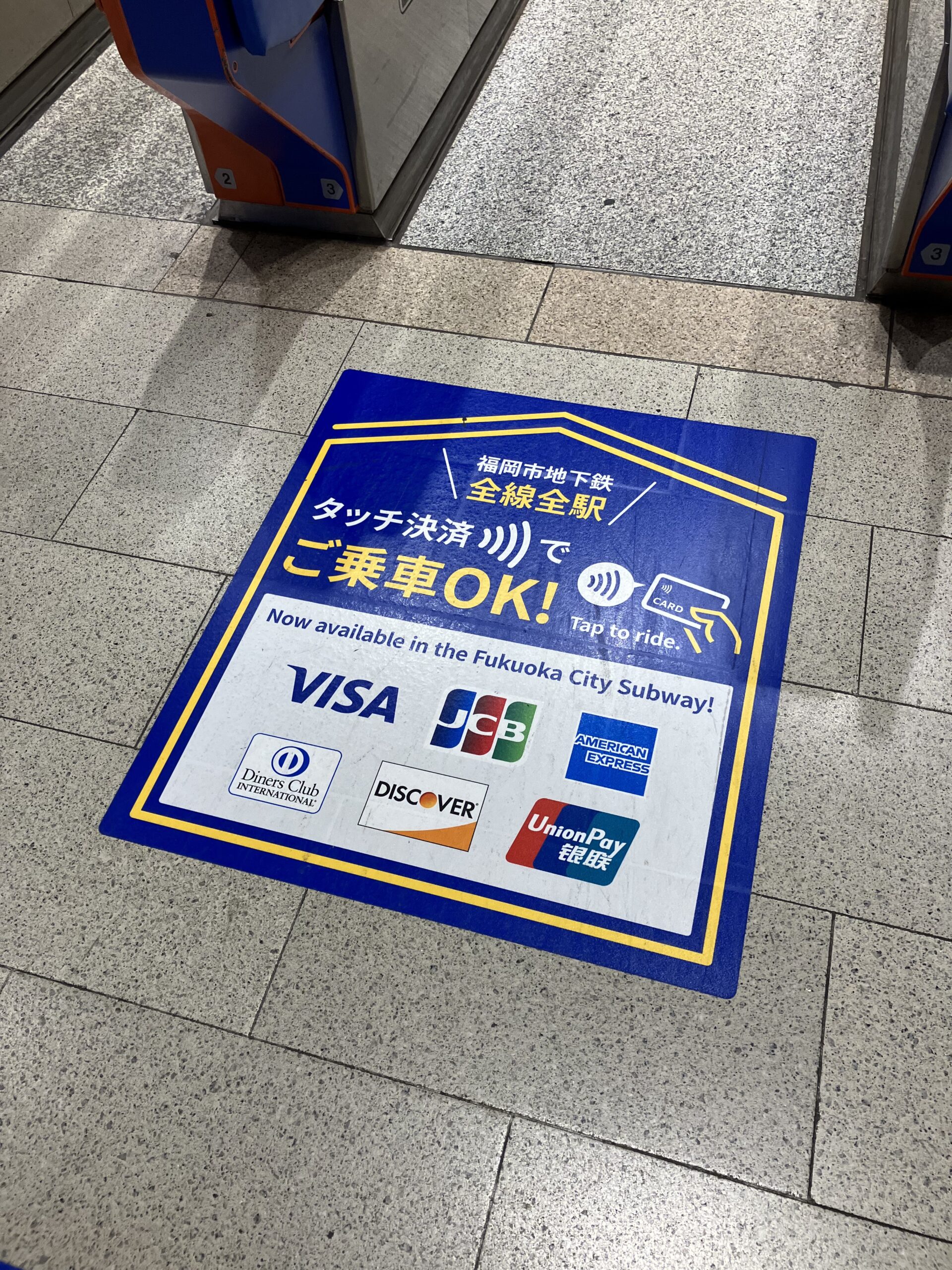
Is Japan Still Cash Heavy in 2023? Credit Cards Acceptance in Japan
Japan has a reputation of being a cash heavy country despite its status as a first world nation. Since I recently went to Japan for 5 weeks ranging from Hokkaido to Kyushu regions with the Big 3 destinations (Tokyo, Kyoto, & Osaka), I’d like to share my experiences with my credit card usage throughout my travels in Japan.
Of course, it’s best to use credit cards with no foreign transaction fees while traveling abroad.
Can You Use Credit Cards in Restaurants/Cafes in Japan?
Japan is a major food destination, and credit card acceptance is subjective on the kinds of food you’re looking for. But generally, credit card acceptance is a lot bigger than what many people would believe, even in non-high-end restaurants. Many establishments would put stickers of payment processors logo in front of their doors or windows to let customers know that they accept certain credit cards.
A nice reference you can use to see if a restaurant accept credit cards or not is Tabelog. Tabelog is basically a Japanese review site for restaurants, and the site has a nice filter for credit card acceptance, up to your preferred payment processor!
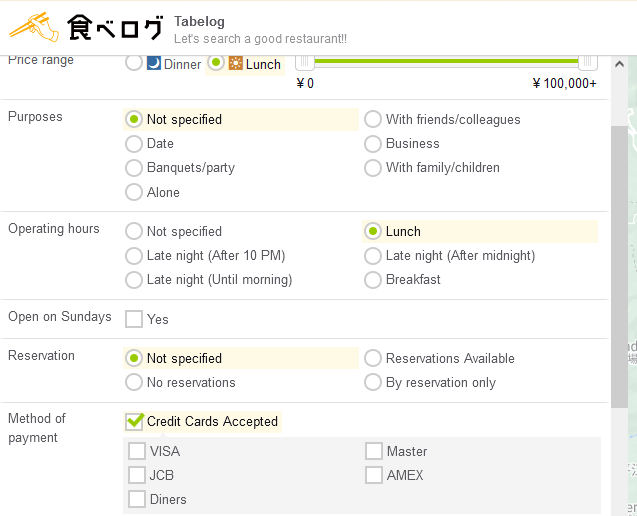

I find most of the chain restaurants like Sukiya now accept credit card payments. Of course, not all dining establishments will accept credit cards, particularly the small mom and pop shops and ones that use a ticketing machine (not true 100% of the time, though).
Can You Use Credit Cards in Convenience Stores in Japan?
The major convenience stores in Japan are 7-11, FamilyMart, and Lawson. All of them will accept credit cards as form of payments! These convenience stores will most likely have ATM machines inside so you can easily withdraw cash. To withdraw cash, I’d recommend getting the Charles Schwab Debit Card. They’ll refund your ATM fees at the end of the calendar month with no foreign transaction fees on top.
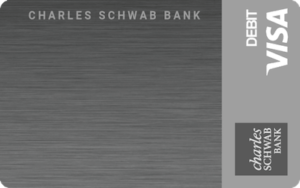
Which Convenience Stores in Japan is Best for ATM Withdrawals?
I find 7-11 to be the best convenience store chain for ATM withdrawals because they’re the only one that provides 10x 1000 yen when you’d withdraw 10,000 yen. Other convenience stores would only give singular 10,000 yen note when you’d withdraw at least 10,000 yen. From my experience, you do want some cash with you at all times, but not too much so you can minimize the opportunity to have too many coins with you at the end of your trip. With that said, a coin pouch is really convenient for Japan.
I found that 1000 yen notes are the most frequently used to load up IC cards, play at the arcades to exchange them for coins, and entering temples.
Some hotels might have a “Simple Exchange” machine where you can trade foreign currencies for yen. But, I don’t recommend doing so since the exchange rate is not good. It could be OK for smaller bills, and you need cash quick.
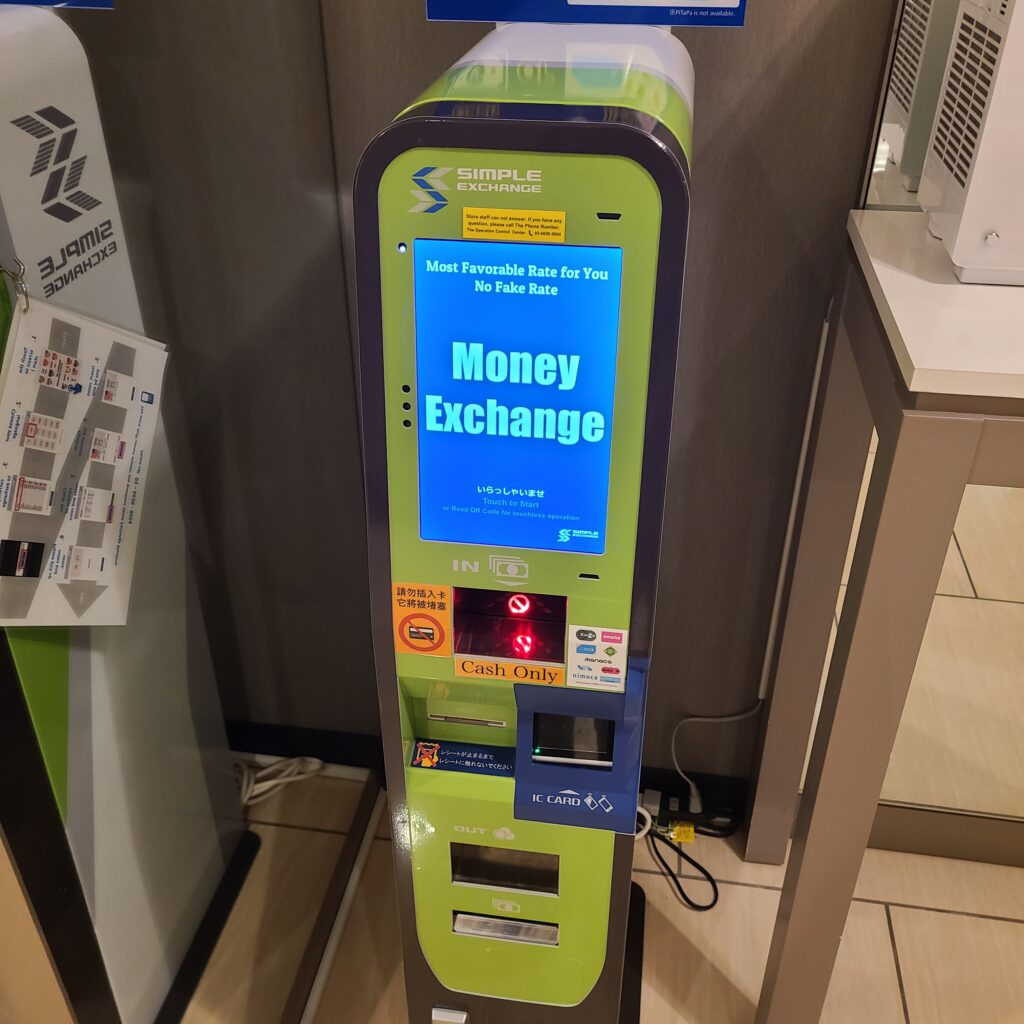
Can You Use Credit Cards for Trains in Japan?
For subways, you can only pay with cash or load up the balance of your IC card at the ticket machines. An IC card is recommended for convenience since moving around with trains is a given while you’re in Japan. Thus, cash still plays a vital role for public transportation in Japan.
Interestingly, when I went to Fukuoka down in the Kyushu region, the city subway started to accept credit card payments instead. Fukuoka was the only city where I encountered this, so there may be more developments coming to more cities in Japan! MasterCard was not accepted which was fascinating. I tried it out with my Chase Sapphire Preferred and Amex Marriott Bonvoy Business and confirmed that they worked!
I suspect it’s not there yet for bigger cities like Tokyo and Osaka due to the much bigger amount of traffic they’d get compared to Fukuoka. The IC cards’ tap speed is much faster than credit cards’ (FeliCa vs. EMV).
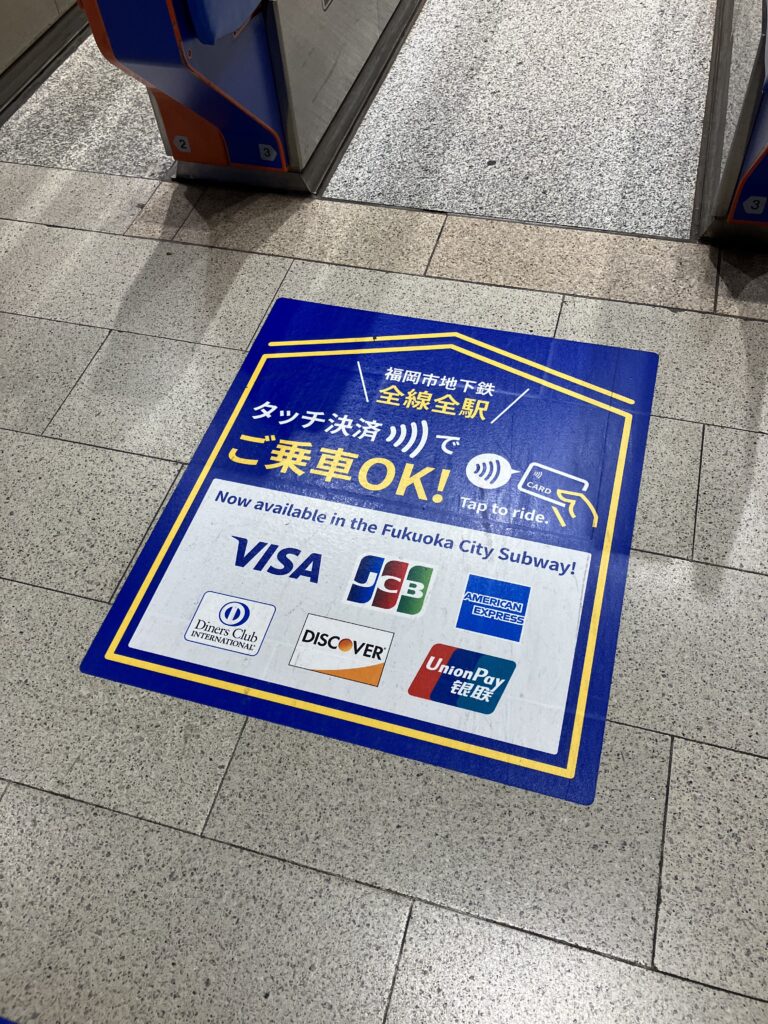
For shinkansen or bullet trains, you could buy a ticket with credit cards. Although, you may need to enter a PIN while you buy it at the ticket machine, so you’d want that set up. Alternatively, JR National Pass and JR Regional Passes can be bought with credit cards on certain JR offices in certain stations, or by buying them online before your trip to Japan. Make sure to do some calculations and know the pass’ limitations to make sure getting the pass is worth buying based on your itinerary.
Can You Use Credit Cards for Temples/Castles in Japan?
Most likely not. Lots of them will only accept cash, but I did find Nijo Castle in Kyoto accept credit card as payment. These are rare, however and shouldn’t be expected as norm.
Can You Use Credit Cards for Arcades/Game Centers in Japan?
Most likely not. The game machines would only accept coins, and there are machines where you can exchange paper yen for them. Some of them might accept IC cards, but I would be careful since they could get very addictive!
Game centers in Japan tend to come in layers signified by the floor you’re on, and you might be able to pay certain games with credit cards like darts and bowling if they have them.
Do Vending Machines in Japan Accept Credit Cards?
Vending machines can be seen everywhere in Japan. Most still accept cash or IC cards only, but few of them started to accept credit cards as well. However, I found most of them to not work despite seeing the payment processors logo on them, so it’s possible that foreign credit cards aren’t accepted or the machines aren’t working properly for credit cards.
American Express Acceptance in Japan
American Express acceptance in Japan is pretty good thanks to their partnership with JCB. JCB is Japan’s own payment processor, and they’re widely accepted in the country. It’s so good that even a secluded sushi place in northern Hokkaido, in the town of Monbetsu, accepted Amex along with Visa and MasterCard. With that said, anytime you see a JCB logo at an establishment, then you’d be able to use your Amex card.
Amex is interestingly the only payment processor that seems reliable for foreign credit cards to load up IC card balance through Apple Wallet. The catch is that the only IC cards it works on are Suica, PASMO, or ICOCA. Suica and ICOCA are IC cards that work throughout all Japan, but they’re based out of Kanto and Kansai respectively. Pasmo is a commuter card that’d only work on Tokyo’s subway system.
Unfortunately, I couldn’t test this out myself since I have an Android phone and my IC card is Kitaca, which is based from Hokkaido. But, I heard it can be buggy in general that it might not be worth stressing over in case if it doesn’t work on your end. It does interest credit card points enthusiasts like myself ;).
Conclusion
While Japan has a lingering reputation of being a cash-heavy country, I found credit card acceptance greatly improved from the past years I visited Japan. But, cash still play a vital role and they’re must-haves, particularly for public transportation and reloading balances on your IC cards.
